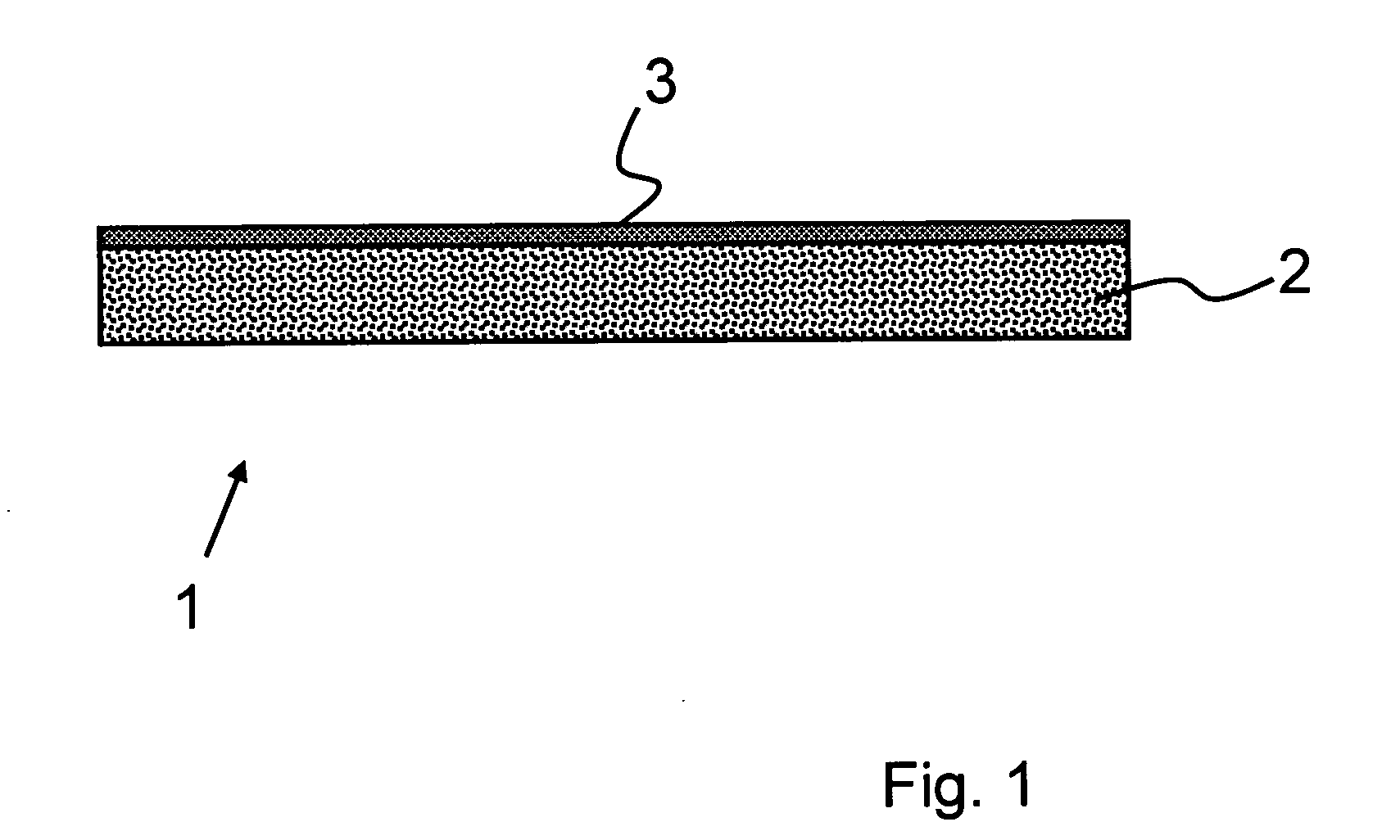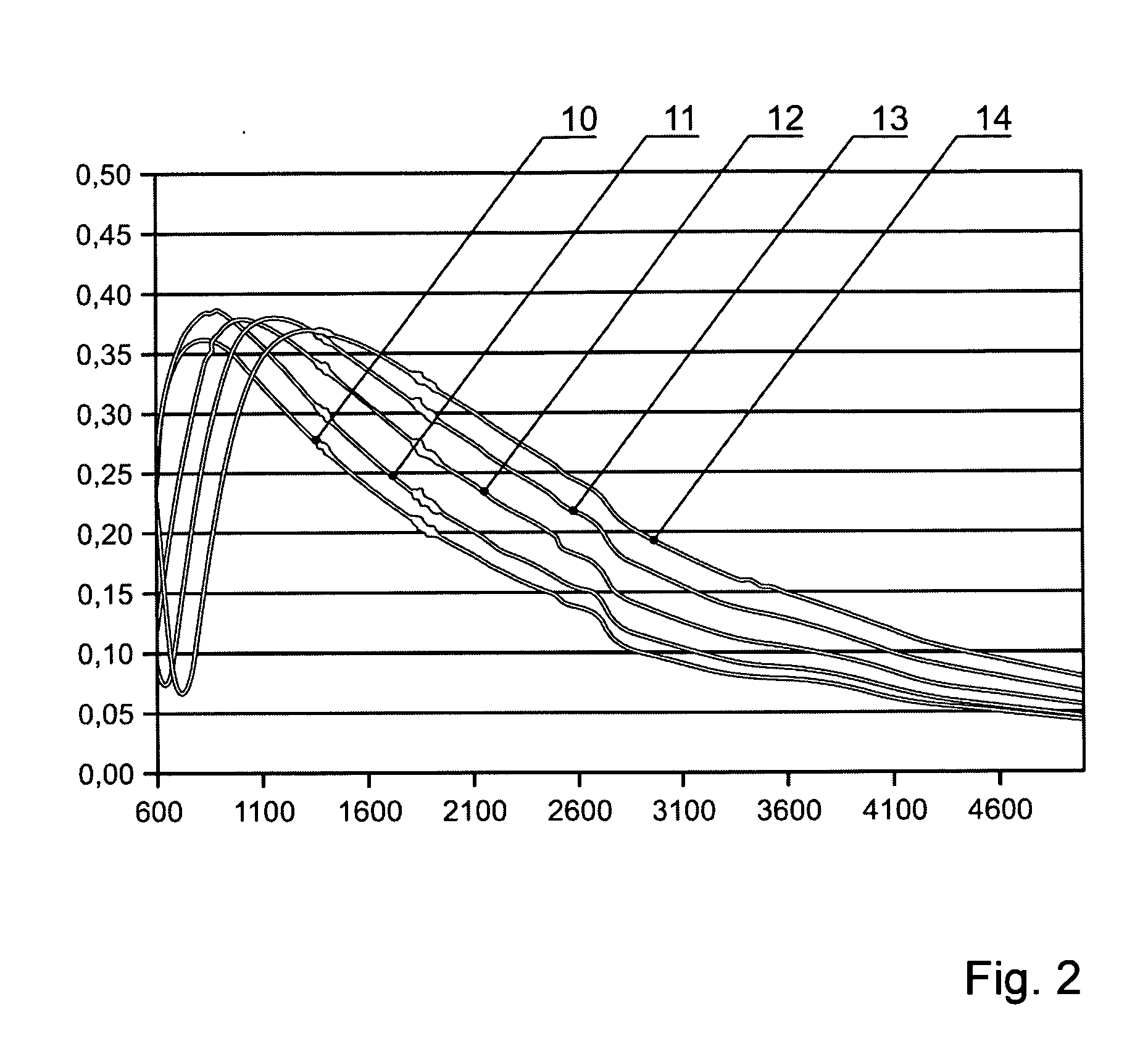Transparent glass or glass ceramic pane with a layer that reflects infrared radiation
a technology of infrared radiation and transparent glass, applied in the field of viewing panes, can solve the problems of low heat resistance, inapplicability relevance, and high cost of applying such layers
- Summary
- Abstract
- Description
- Claims
- Application Information
AI Technical Summary
Benefits of technology
Problems solved by technology
Method used
Image
Examples
Embodiment Construction
[0058]The invention will be described in greater detail below with reference to schematically illustrated exemplary embodiments based on the drawings FIG. 1 to FIG. 5.
[0059]FIG. 1 shows, in schematic illustration, a transparent glass or glass ceramic pane 1, which has a thermal expansion a of less than 4.2.
[0060]Applied to the glass substrate 2 is a titanium oxide layer 3, which has a refractive index greater than 2.3 and thus acts as a transparent single-layer reflection layer.
[0061]In this case, the titanium oxide layer 3 reflects primarily in the infrared region.
[0062]FIG. 2 shows schematically the curve of the degree of spectral reflection of various exemplary embodiments of a layer that is formed from titanium oxide and reflects infrared radiation with variation of the layer thickness.
[0063]Plotted on the x axis is the wavelength in nanometers and plotted on the y axis is the degree of spectral reflection.
[0064]Curve 10 shows a titanium oxide layer of about 80-nm thickness with...
PUM
| Property | Measurement | Unit |
|---|---|---|
| refractive index | aaaaa | aaaaa |
| thickness | aaaaa | aaaaa |
| thickness | aaaaa | aaaaa |
Abstract
Description
Claims
Application Information
 Login to View More
Login to View More - R&D
- Intellectual Property
- Life Sciences
- Materials
- Tech Scout
- Unparalleled Data Quality
- Higher Quality Content
- 60% Fewer Hallucinations
Browse by: Latest US Patents, China's latest patents, Technical Efficacy Thesaurus, Application Domain, Technology Topic, Popular Technical Reports.
© 2025 PatSnap. All rights reserved.Legal|Privacy policy|Modern Slavery Act Transparency Statement|Sitemap|About US| Contact US: help@patsnap.com



